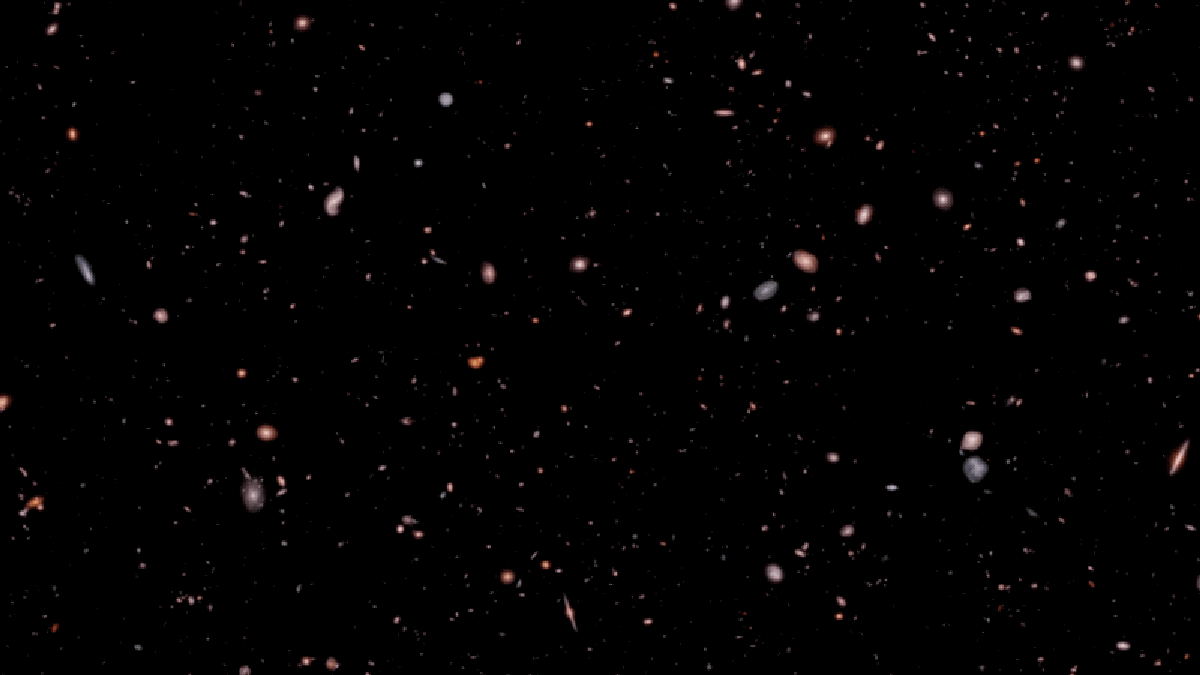
In August 2022, scientists published a Webb Space Telescope deep field image that included some incredibly ancient galaxies, which formed around 390 million years after the Big Bang.
Now, the Space Telescope Science Institute has produced a visualization of part of the survey that discovered those ancient galaxies, giving viewers a dizzying journey through deep space to see light from about 13.4 billion years before now.
The data used to produce the visualization is from the Cosmic Evolution Early Release Science Survey, or CEERS, which uses the Webb Space Telescope to see light from the early universe. Just last week CEERS announced the discovery of the most distant active supermassive black hole, dating to about 570 million years after the Big Bang. (Our universe is about 13.77 billion years old now.)
Advertisement
The trippy visualization focuses on a region of space called the Extended Groth Strip, a dim stretch near the Big Dipper. The video flies through space at a rate of 200 million light-years per second, effectively going back in time and zooming past increasingly ancient galaxies. The video terminates at Maisie’s Galaxy, a pinprick of pinkish light named for the daughter of Steve Finkelstein, an astronomer at UT Austin and a member of the CEERS Collaboration.
Maisie’s Galaxy formed about 13.4 billion years ago, making it one of the oldest galaxies seen by Webb. Last year, two galaxies spotted by Webb on the outskirts of galaxy cluster Abell 2744 were dated to 450 million years after the Big Bang and 350 million years after the Big Bang.
Advertisement
Advertisement
Because Webb’s infrared gaze can peer so far into space (which is to say so far back in time), the telescope is a remarkable tool for astronomers seeking to understand how galaxies evolve and how stars are born. The telescope has already shown that even in the ancient universe, galaxy evolution was more advanced than previously thought.
Though this visualization may be just what the doctor ordered, you can also take a deep dive into the images that made up the CEERS deep field here.
Services Marketplace – Listings, Bookings & Reviews